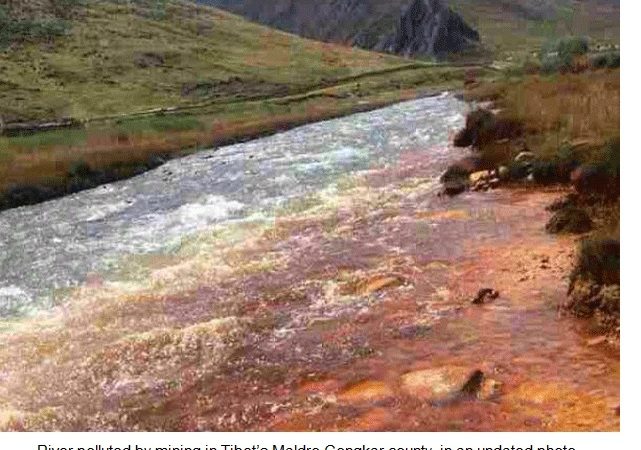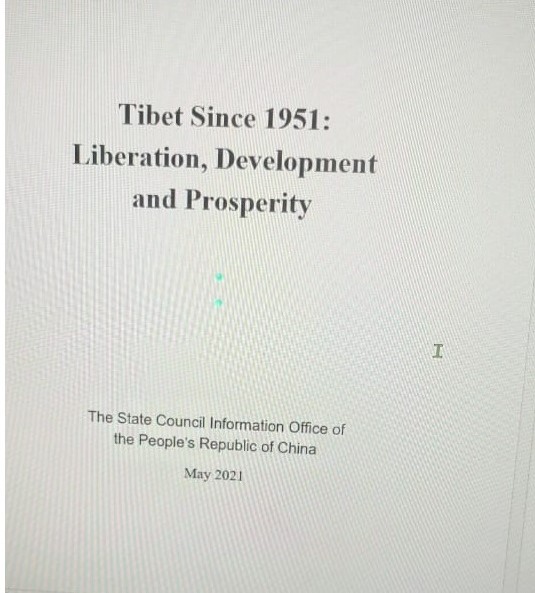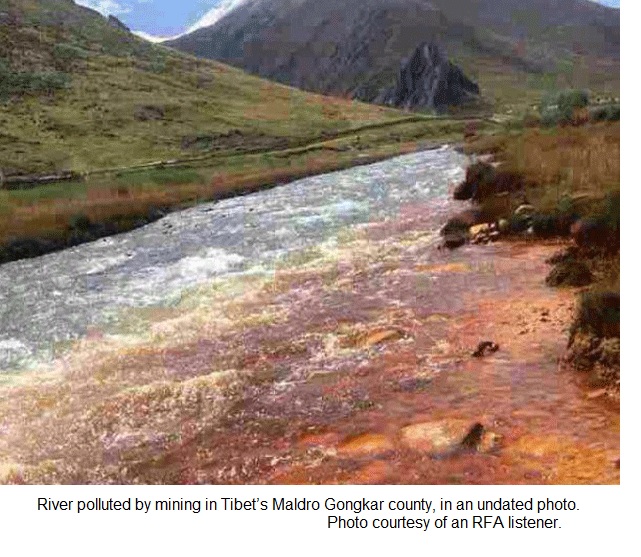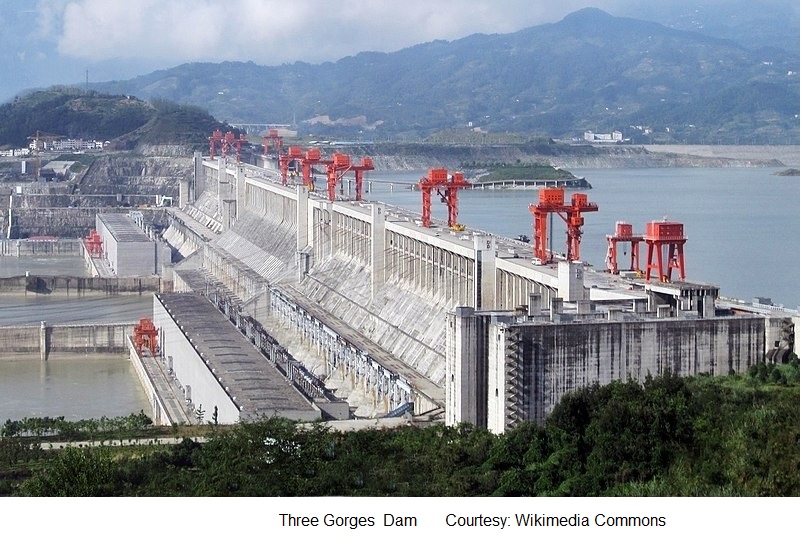
Harming Tibet’s environment…..
Tenzing Dhamdul*
A White Paper, ‘Tibet since 1951: Liberation, Development and Prosperity’ brought out by Beijing clearly shows that Chinese leadership is not concerned at the destruction on Tibet’s environment. The 40 -plus page document leaves, no doubt, whatsoever that China is interested in exploiting the natural wealth of the ‘roof of the world’ just as it is changing its demography in its bid to ‘sinicize’ Tibet. The thrust of the document is on development, building more dams, and several infrastructural initiatives. It only makes a passing reference to the fragile environment of Tibet.

It is difficult to miss the self-congratulatory tone in the White Paper, however, when it claims “Work has been carried forward to build eco- environmental culture demonstration areas” (Page 32). And adds as if in justification of the claim that “Lhasa, Shannan, Nyinchi and Qamdo cities and Ngari Prefecture have won national titles for their pioneering work, as did Bayi District of Nyinchi City, Yadong County and Damxung County. Lhunze County has become a base for practicing the concept that clear waters and green mountains are invaluable assets”
But, nowhere, while putting on record various development plans underway, is a mention of the serious damage inflicted on Tibetan ecology. There is much obfuscation, though.
“From 2015 to the end of 2020, 6.5 billion kwh of clean energy-generated electricity was transmitted (from Tibet), which greatly reduced carbon dioxide emissions,” says the White Paper (Page 34) but does not acknowledge the reality that Tibet per se did not benefit. The Tibet generated power is transmitted to Mainland China to its light houses and to run its machines even as large parts of Tibet go dark in the night.

By all means, the White Paper is a good PR exercise in image building to showcase a new Tibet emerging under the Communist regime, particularly since the arrival of President Xi Jinping with his three-step plan for the Third Pole of the world as Tibet is also known. For the uninitiated, the plan calls for crushing dissent, sinicisation of Tibet, and fortification of Tibet.
Even a cursory reading of the White Paper gives the impression that Xi Jinping appears to be inching towards his goal. But at what cost? The big dams have largely changed the fragile ecology of the Tibetan Plateau, which, for the Chinese is the Qinghai–Tibet Plateau.
It calls for urgent pro-active measures to protect and preserve the large brackish lakes that dot the landscape amongst other natures’ bounty. There is sadly no such mention. It reflects a mindset about which a little while later.
Suffice to say, there is an urgency to maintain the pristine purity of Tibetan region. Because its glaciers are no more than the ‘water tower’ of Asia. Also, because it is home to the three longest rivers in Asia.
The development perspective that sans ecological concerns has made Tibet a dump zone. It will eventually lead to the drying up of rivers, melting of glaciers, thawing of permafrost, flooding, loss of grasslands and many more – all due to the environmental destruction in Tibet under CCP and President Xi Jinping.
Significantly, a notable absentee at global environment conferences and summits is the reigning helmsman of China. The Conference of Parties (CoP) 26 summit held at Glasgow last November saw a number of world leaders put their heads together to come to grips with environmental degradation and brain storm for a blue print for action.
President Xi Jingping should have joined the deliberations. At least for the sake of Tibet, which is the storehouse of one of the largest quantities of permafrost in the world, thereby preventing Carbon from ever reaching the atmosphere.
He did not. His absence drew criticism as China is the largest polluting nation. Also, because its Carbon emission has been on an unprecedented rise; the land that traces its origins back to a cradle of civilization in the fertile basin of the Yellow River is showing scant respect to various environmental agreements it has signed over the years.
Given a go-by is the Montreal protocol (a landmark agreement reached in 1987). Mining activities is polluting Tibet. For instance, the Gyama Copper Poly-metallic mine has polluted a river nearby. For the people of Dolkar and Zibuk villages of Lhundup County near Lhasa, this river, though small, is lifeline. They closed ranks and held mass protests in 2014. And faced repression but got no relief till-date.
Now cut to the havoc played with rivers.
The Bramaputra (Yarlung Tsangpo in Tibet), Mekong (Zachu), Yangtze (Drichu), Indus (Sangye Kabaab) and many more mighty rivers originate from Tibet. These rivers not only provide waters to the lower riparian countries but also important means of transportation connecting land-locked Tibet to the oceans of the world. Likewise, these rivers have gifted a unique bio-diversity to the lands they traverse.
The Mekong in Tibetan Dechen prefecture (Yunnan province) presents an awe-inspiring biosphere that has become a big draw with tourists. Shangri-La County in Dechen prefecture is home to Tricholoma Matsuke, a very rare mushroom that has high demand in Japan.
All these gifts of the nature to Tibet and through Tibet to the world are facing existential threat, as the White Paper clearly brings out, from a development path that is leaving a trail of destruction and debris.
 The near-term pursuits are not caring for Tibet and its inhabitants, as also its immediate neighbours who experience the fall-out of its environmental destruction and degradation.
The near-term pursuits are not caring for Tibet and its inhabitants, as also its immediate neighbours who experience the fall-out of its environmental destruction and degradation.
Pertinent in this context is the damage from the fascination for big dams. The ‘Three Gorges dam’, for instance, has hampered water flows to the lower riparian regions, thereby creating a ‘Water Crisis’.
The new fad, ‘stored hydro’ concept, is no less disturbing. Water is released from dams at different heights without relying on the water cycle and the nature flow of river. This action degrades the whole flora and fauna by supplementing the dam as an unnatural and anthropogenic entity.
So much so, the news of construction of dams especially on the Yellow River is a matter of concern, to say the least. These new ventures on water are not only hazardous to Tibet and its immediate vicinity but also to the whole of South East Asia.
As already pointed out, President Xi’s “no show” at CoP26 brings into question China’s true intent in protecting especially the Tibetan environment. Like the White Paper on Tibet, many of its so-called landmark resolutions rarely mention environment and its preservation. The Chinese Communist Party’s recent resolution on history, which is a 14-page document, has just 3-4 lines on environment.
Needless to say, Beijing’s declaration of a Carbon neutral zone by 2060 (which is 10 years after the deadline set in the Paris treaty) is neither here nor there. Well, as long as Tibet is seen and allowed as the perfect carbon dumping zone. Also, as a desolate land that egged the destruction of Asia and the whole world eventually, simply because Beijing cared less about it.
-*The writer is a researcher with roots in Tibet
-
CHINA DIGEST
-
 ChinaChina Digest
China’s PMI falls for 3rd month highlighting challenges world’s second biggest economy faces
ChinaChina Digest
China’s PMI falls for 3rd month highlighting challenges world’s second biggest economy faces
-
 ChinaChina Digest
Xi urges Chinese envoys to create ‘diplomatic iron army’
ChinaChina Digest
Xi urges Chinese envoys to create ‘diplomatic iron army’
-
 ChinaChina Digest
What China’s new defense minister tells us about Xi’s military purge
ChinaChina Digest
What China’s new defense minister tells us about Xi’s military purge
-
 ChinaChina Digest
China removes nine PLA generals from top legislature in sign of wider purge
ChinaChina Digest
China removes nine PLA generals from top legislature in sign of wider purge
-
-
SOUTH ASIAN DIGEST
-
 South Asian Digest
Kataragama Kapuwa’s arrest sparks debate of divine offerings in Sri Lanka
South Asian Digest
Kataragama Kapuwa’s arrest sparks debate of divine offerings in Sri Lanka
-
 South Asian Digest
Nepal: Prime Minister Dahal reassures chief ministers on police adjustment, civil service law
South Asian Digest
Nepal: Prime Minister Dahal reassures chief ministers on police adjustment, civil service law
-
 South Asian Digest
Akhund’s visit to Islamabad may ease tensions on TTP issue
South Asian Digest
Akhund’s visit to Islamabad may ease tensions on TTP issue
-
 South Asian Digest
Pakistan: PTI top tier jolted by rejections ahead of polls
South Asian Digest
Pakistan: PTI top tier jolted by rejections ahead of polls
-






Comments